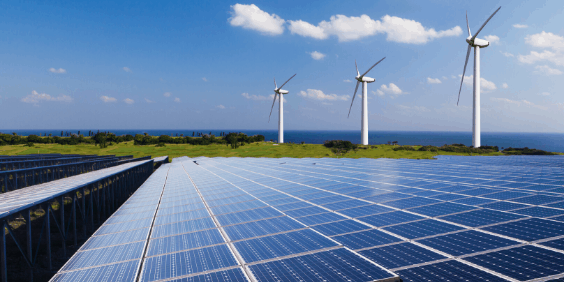Carbon credits in Saskatchewan: An overview of the CCUS Standard

Authors: Randy Brunet, K.C., Scott Masson, Thomas Collopy, Nicole Graham, Stephanie Symonds-D’Arcey
The Province of Saskatchewan (“Saskatchewan”) recently updated its Carbon Capture, Utilization and Storage Credit Standard (the “CCUS Standard”). It was first published in May 2023 to clarify registration eligibility, generation, trading, and liability for CO2 leakage.
This blog provides a high-level overview of the CCUS Standard, including the recent updates.
CCUS Standard overview
Pursuant to The Management and Reduction of Greenhouse Gases (Standards and Compliance) Regulations, 2023 (the “Regulations”), a regulation under The Management and Reduction of Greenhouse Gases Act (the “Act”), the CCUS Standard governs the generation and trading of CCUS credits (“CCUS credits”) which can be used to fulfill compliance obligations of regulated emitters from Saskatchewan’s output-based performance system requirements. The CCUS Standard further establishes liability for CO2 leakage, formulas governing CCUS credit generation, rules surrounding the buying/selling of CCUS credits, and how CCUS credits are divided between project partners.
Recent updates
The recent updates (made in May 2024) to the CCUS Standard include the following changes:
| CHANGE | DETAILS |
| Revisions to definitions |
|
| Structural reorganization |
|
| New section on CO2 liability |
|
| Trading |
|
| Holdback factor |
|
| Equations review |
|
| Expansion of registration |
|
|
Addition to concerning emissions |
|
|
Liability modification for CCUS credits |
|
|
Amendment for compliance obligations |
|
CCUS Standard details
With the recent updates incorporated, key terms of the CCUS Standard are summarized as follows:
- Eligibility, registration and credit plan: CCUS projects (as defined in the CCUS Standard and used throughout) can be registered pursuant to the CCUS Standard. To be eligible, the CCUS project must:
- Capture CO2 directly from a facility in Saskatchewan;
- Inject the CO2 into a containing reservoir in Saskatchewan capable of storing CO2;
- Have authorization as a CCUS project, an enhanced oil recovery project or other applicable project; and
- Be in good standing with all operating permits and regulations applicable to the injection of CO2 in Saskatchewan.
Further, the CCUS project must have a designated project developer. Once a CCUS project completes its 10-year monitoring period and has any applicable holdback returned, it is no longer subject to the CCUS Standard. Developers must submit CCUS project registration forms and a credit plan that ensures the permanent containment of CO2.
- CO2 injection by multiple project developers: The CCUS Standard contemplates the potential for a CCUS project to be integrated into a CO2 This includes injection facilities outside the CCUS project and specifies that all emissions associated with common capture and transportation facilities must be prorated between the relevant CCUS projects, with each project developer applying an equation set out in the CCUS Standard for each of the common capture and transportation facilities shared.
- Credit reports: Project developers must submit credit reports that include a declaration by each CCUS project partner’s authorized signing officer.
- Holdbacks: Project developers must monitor CCUS projects for a minimum of 10 years to demonstrate permanent containment conformance is consistent with expectations. After the end of such time period, project developers may submit an application for release of their holdback. It will be released if the Minister is satisfied that the CO2 is behaving in a stable and predictable manner, with no significant risk of future leakage.
- Emissions methodology and earning CCUS credits: The CCUS Standard establishes the methodology for quantifying injected CO2 and for calculation of CCUS credits. These credits are to be distributed to CCUS project partners in accordance with an approved CCUS Project Registration Form. CCUS credits are calculated, at a high level, as follows:
CCUS credits = Emission Reduction – Discount – Holdback – Reversal
- CO2 liability: The CCUS Standard establishes a formula for the CO2 liability of a CCUS project which permits a reversal, or the “clawing back” of CCUS credits if CO2 leakage occurs. In this case, any CO2 liability will first be fulfilled by retiring any remaining holdback collected from the CCUS project. If the holdback is insufficient to cover the calculated CO2 liability, the remaining CO2 liability will be apportioned between CCUS project partners based on the current allocation of CCUS credits in effect for the CCUS project. CCUS project partners shall fulfill their portion of the CO2 liability by retiring CCUS credits that they own at the time the CO2 liability is incurred. If that is insufficient, the CCUS project partner must either retire performance credits it owns at the time the CO2 liability is incurred and/or make a payment to the Government of Saskatchewan for deposit in accordance with the Act at the price per tonne CO2e that applied for the compliance year in which the CO2 liability is reported.
- Retiring a CCUS credit: Regulated emitters may retire held CCUS credits to fulfill compliance obligations at any regulated facility owned or operated by the regulated emitter at the rate of one CCUS credit for each tonne of CO2 Upon retirement, the applicable CCUS credit cannot be earned, retired, bought or sold again for any purpose.
- Buying and selling a CCUS credit: These credits can only be bought or sold to other regulated emitters subject to the Regulations. When doing so, a transaction record must be submitted to the Minister within 30 days of the transaction, including the details required by the CCUS Standard (such as the serial number of the applicable CCUS credits).
- Terms and conditions: The CCUS Standard sets out a number of terms and conditions associated with CCUS credits, including that if a CCUS credit is sold and later found to be invalid, the original seller assumes the risk that the CCUS credit may be revoked, and that the Minister is responsible for determining credit ownership if there is a dispute.
- Verification requirements: The CCUS Standard imposes verification and assurance requirements that project developers must meet, including submitting a verification report and ensuring that those verifying compliance are qualified persons from accredited verification bodies with ISO 14065 verification.
- Audits and inspections: The CCUS Standard enables the Minister to perform an audit or inspection on any approved CO2 storage projects and any associated documentation.
CCUS Project Registration Form
CCUS credits can be allocated between CCUS project partners in the CCUS Project Registration Form. The form has yet to be published – however, it is expected that it will be published shortly.
Takeaways
Along with Alberta and Western Manitoba, Saskatchewan sits atop of the Western Sedimentary Basin, making the province particularly desirable for CCUS projects. CCUS project development plays a key role in reducing greenhouse gas emissions and supporting Prairie Resilience, Saskatchewan’s Climate Change Strategy. The CCUS Standard provides critical requirements and guidance in relation to CCUS credit generation and retirement to fulfill compliance obligations necessary for increasing the economic viability of CCUS projects in Saskatchewan.
MLT Aikins has extensive experience advising on energy projects across Western Canada, including the application and interpretation of the CCUS Standard. Contact one of our Energy lawyers to learn more about the CCUS Standard and how it applies to your project.
Note: This article is of a general nature only and is not exhaustive of all possible legal rights or remedies. In addition, laws may change over time and should be interpreted only in the context of particular circumstances such that these materials are not intended to be relied upon or taken as legal advice or opinion. Readers should consult a legal professional for specific advice in any particular situation.






